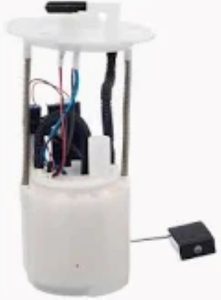Several causes of fuel pump wear arise with time, all of which can affect the life and function of the pump. The primary culprits are dirty fuels, full of particles or contaminants that can wear away the internal components of the pump. Anything less than a crystal clear stream and the sand, mud, and dust can cause abrasions on the rotor and impeller inside the fuel pump. This means the fuel pump will become less effective. Polluted fuel shrinks a pump life by up to 20%, so changing your filters regularly is vital to prolong your pump life.
Another frequent contributor to failure of the fuel pump are low fuel levels. On empty or empty tank the pump is working harder because it depends on gasoline for lubrication and cooling. Lack of fuel will also be able to cause overheating of the pump, thus speeding up the wearing process. You should make it a habit of never let your fuel empty, it can be advised by expert drivers that a quarter tank would be a least you can put in, as constantly low on fuel only reduces the life of your fuel pump by about 30%.
Another cause of fuel pump failure is low voltage and faulty electrical circuits. If the voltage falls from the battery-powered 12 volts, the pump will have to use more current to run, drawing higher resistance and producing excess heat in the process. This can greatly shorten the pump's life cycle with the more significant engines experience a 25% loss of efficiency due to a lack of power being provided. Coupled with occasional poor electrical connections, defective alternators or worn-down batteries it makes things worse, so it is essential having a proper consistent maintenance.

Another is high-performance use which puts extra load on standard fuel pumps. The continual flow is often why these engines can need a pump capable of operating at high flow rates, even higher than 300L per hour, to not starve the engine of fuel under heavy acceleration or high speed. Pumping beyond the design limits of standard pumps, which may run hot or wear out prematurely. To avoid this pitfall on a modified or high-powered engine, companies like Walbro suggest using pumps that are rated for higher pressures and flow rates if you're building a performance-oriented engine.
Factors like harsh temperatures, whether hot or cold also wear out the fuel pump. When they encounter rapid temperature swings, pumps are put under thermal stress that may lead to premature wear of seals and internal components in its parts. Studies show an average of 40% decreased life expectancy of fuel pumps in a hotter climate vs milder environment.
Wear is also influenced by the quality of installation and maintenance. Misalignment — Pumps that are not properly installed or calibrated are more likely to misalign, which increases the chance of early wear. It mainly comes to choosing the right Fuel Pump and following the proper maintenance procedure to reduce wear and offers pump duty efficiency in different conditions.